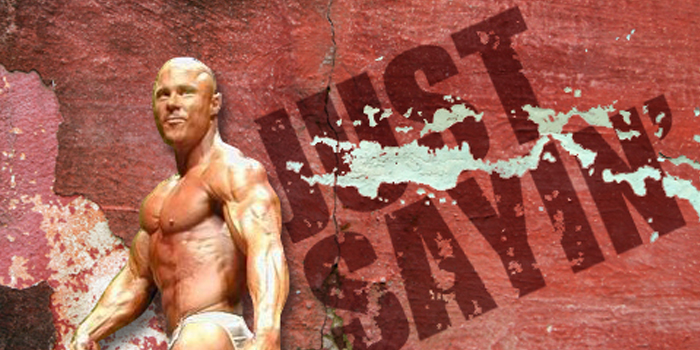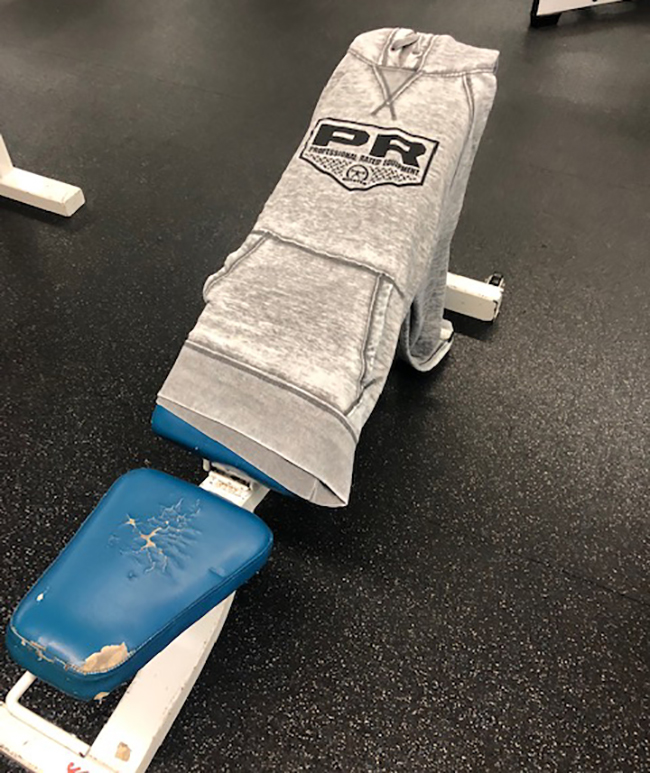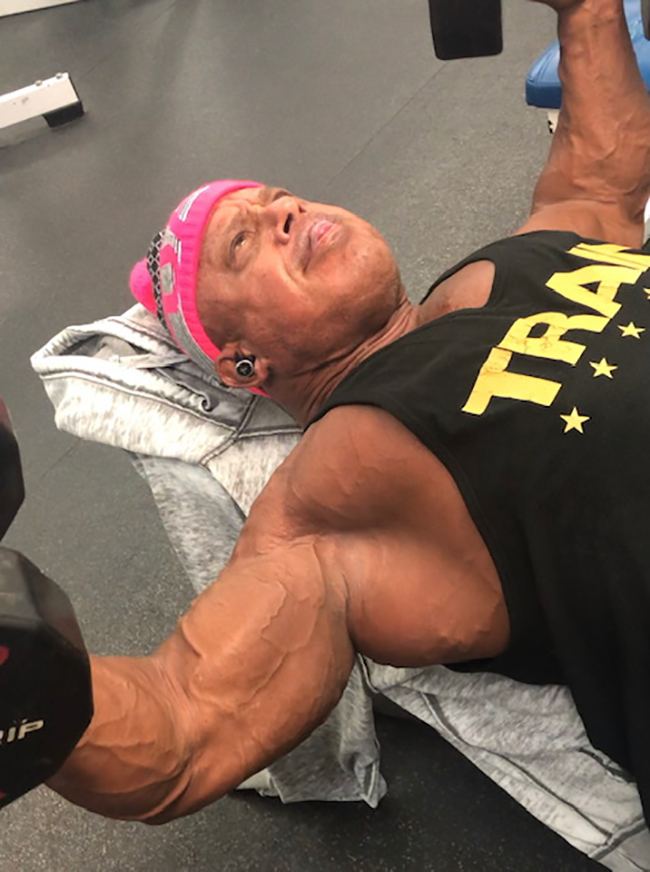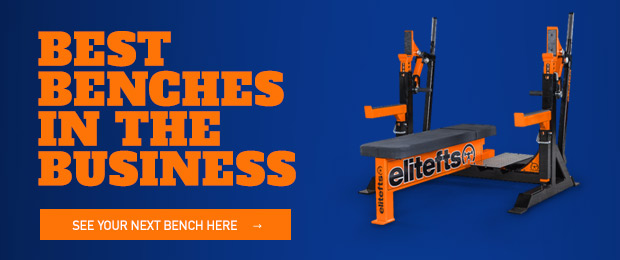
I don’t write articles about training to make people feel stupid, and I don’t write articles to make people feel like I have all of the answers. I DO write training and nutrition articles for elitefts because I have 35 years of experience. In that time, I have made numerous mistakes and learned most all of what I know from trial and error. I have also never accepted what others have told me or things that I have read without first putting them to the test.
RECENT: Just an Old Guy Fighting for Cool
Damn near anyone who has trained for a few years has come to a point where they feel they understand the correct way to train a muscle group; sometimes they are right, and other times, they only think they are right. If you feel you have it all figured out, skip to one of my more entertaining articles where I bitch about not having a shitter on a boat or make fun of people in the industry for dressing like douches. If you’re still here, I have some advice that I have gleaned over the last three-and-a-half decades that you may have overlooked when it comes to training the most-trained body part in every gym around the world — the chest.
Though there are myriads of things I could tell you about why and how most people don’t train their chest as effectively as they should, that would take more time than either of us have. My editor rules with an iron fist, so I am limited to providing the top-3 things that I feel most people either do not do or do incorrectly while training chest.
1. Elbow Position
I have written about this numerous times over the years because elbow position is crucial — not just for chest training but for pretty much every body part that involves upper-body training. I am only focusing on elbow position for chest here, though.
In short, we are bodybuilders, so pec development is our focus. How much weight we push is secondary to developing full, round, balanced pecs. Powerlifters are focused on how much weight they can move so their elbows should be tucked. Bodybuilders need to flare their elbows away from the body for all chest movements (including if you are one of the few who still does pullovers for chest — though pullovers should be used as a back exercise).
To explain this as concisely as possible, the elbows should be out to the side, not tucked closer to the body. You don’t need to use a regular grip, but it does help to force the elbows from tucking versus a suicide grip.
If you stop a bench press with the bar on your chest, your upper arm (from the elbow to the shoulder) should make a “T” in relation to your body. Now, the arms may not form a PERFECT T, but it should be damn close.

I understand that a lot of people consider flaring the elbows to be a dangerous position, but it is only dangerous if you aren’t warmed up well and if you are pushing weights you can’t handle in rep ranges that are too low.
2. Incline Position for Upper Chest Development
I am all about old-school training, but one thing the old-schoolers (including myself) do incorrectly is set their incline benches too high. Back in the ‘70s, inclines were typically about 70 degrees (way too high). In the ‘90s, most inclines were around 45 degrees (too high but headed in the right direction). Today, your incline should be roughly 15-20 degrees and if you have to go higher due to limited pin position on a particular incline bench, don’t go over 30 degrees, if at all possible.
WATCH: What I'm Seeing and Why It's Wrong: Flaring the Bench
The higher the incline, the more the front deltoid takes over. This higher position also puts the shoulder complex in a potentially vulnerable position. Some trainers say that if the scapula is positioned correctly, the higher incline can work very well, but I disagree. I assume that EVERYONE knows how to train chest correctly and already has their scapula in the correct position, and you still need a lower incline to activate more of the upper chest without as much front deltoid work.
Some will also argue that the lower incline doesn’t hit the upper chest enough and that is not correct IF your elbow position is correct (elbows flared). Obviously, if you were to tuck your elbows while in any inclined position, the front deltoid would take over even more. You can train delts when it’s delt day. We are focused on full pec development during a chest session.

Most flat and decline Hammer Strength Chest Press equipment makes it difficult to flare the elbows because the seat will only go so low. As an example, I am 5-foot-8 and I have to drop the seat on a decline Hammer Strength Chest Press to the bottom position to allow for as much flare as possible.
This is precisely why you see skinny kids using these Hammer Strength Presses and using more weight than they should be using. This means more weight can be used, but these same skinny kids end up with little in the way of pec development.
3. Using (or Not Using) the Correct Chest Exercises
Too much emphasis is put on benching and dumbbell pressing. I am not going to sit here and tell you that benching is bad or that bench pressing doesn’t build large pecs because it most certainly can.
The same goes for dumbbell presses, and I feel dumbbell presses are even more beneficial than barbell benching simply because of the greater range of motion. However, there are other exercises for the chest that have been relegated to the “list of exercises that don’t make you huge list” for no good reason. The most notable is the dumbbell flye.

For some reason, this exercise has been pushed to the side because someone, at some point, considered it a useless “isolation” exercise and nothing could be further from the truth. The most muscle fibers will fire when the muscle is in a stretched position, and a dumbbell flye puts the muscle in more of a stretched position than a pressing movement will.
A dumbbell flye movement will also decrease the secondary work of other muscles, like the deltoid complex and the triceps. With elbows flared and going only to the point where the upper arm (from the elbow to the shoulder) is only SLIGHTLY below parallel to the floor (this position doesn’t change if the bench is flat, declined, or inclined), the dumbbell flye works the pecs through a full range-of-motion.
No chest press is going to cover the range of motion that a dumbbell flye will. To prove my range-of-motion point, take videos of you doing a flye movement and then again doing a pressing movement and only pay attention to the range-of-motion based on the ELBOW.
READ MORE: Chest, Shoulder, and Triceps Workout of the Day with 30-10-30 Cable Presses
If your ego has you convinced that you are already training the chest correctly, by all means, keep doing what you are doing. If you focus on the three points that I have made about how to train your chest more effectively, you will find that your once stale chest growth will take off again.
Everyone wants a larger chest, and I doubt any judge has ever said to a competitor that their chest was too large. The pecs are the centerpiece of any good physique whether you are a competitor or if you simply hashtag #dimesmasher on Instagram.










